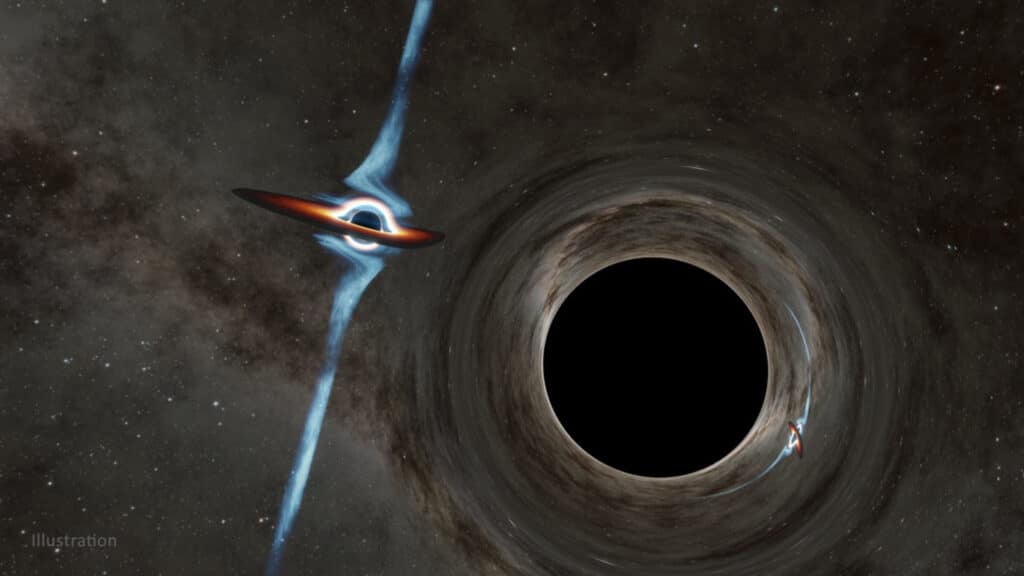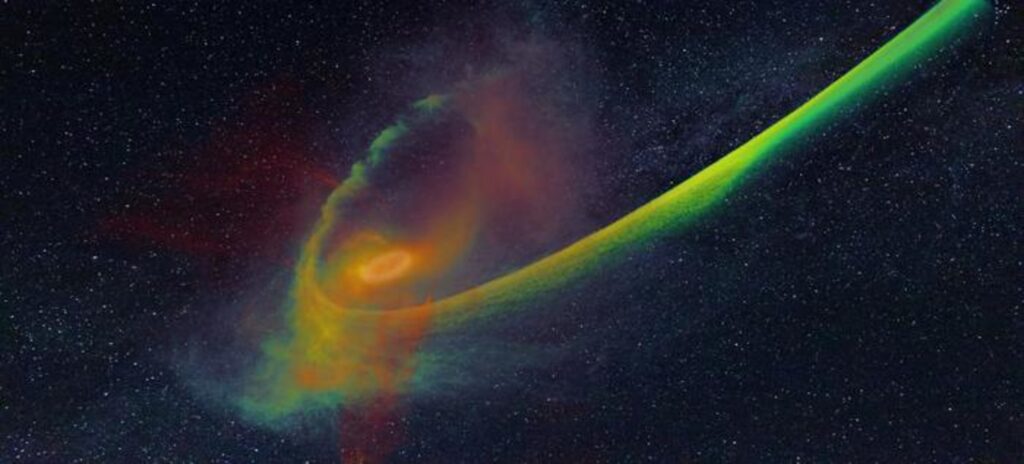An astronomical breakthrough has been made in understanding the violent interactions between stars and supermassive black holes. For the first time, scientists from The Hebrew University of Jerusalem successfully simulated the entire sequence of a Tidal Disruption Event (TDE), from the initial stellar disruption to the peak luminosity of the resulting flare. It reveals a new type of shockwave in these events, resolving a long-standing debate about their energy source.
These cosmic events could be used to test Albert Einstein’s predictions about extreme gravitational environments, furthering our understanding of general relativity.
Supermassive black holes, colossal entities millions to billions of times the mass of our Sun, exert such powerful gravitational forces that they warp spacetime itself. Located at the centers of galaxies, they play a crucial role in the universe’s grand scheme but remain shrouded in mystery due to their elusive nature.
TDEs occur when stars stray too close to a black hole’s event horizon — the point of no return. The immense gravitational forces of the black hole stretch and pull the star, tearing it apart into streams of plasma. This process, known as “spaghettification,” leads to a spectacularly bright flare, outshining entire galaxies for weeks or months.
The study, led by Dr. Elad Steinberg and Dr. Nicholas C. Stone, employs advanced radiation-hydrodynamics simulation software developed by Steinberg. Their work has accurately replicated the full progression of a TDE, a feat never achieved before.
“This study has unveiled a previously unknown type of shockwave within TDEs,” highlighting a key discovery from their research, according to a media release.
The significance of this finding lies in its resolution of a crucial question in astrophysics: what powers the brightest phases of a TDE flare? The team confirmed that it is shock dissipation that fuels these intense luminosities. This understanding opens up new possibilities for astronomers to study these events in greater detail.

Beyond advancing our knowledge of TDEs, this research holds broader implications for astrophysics. It sets the stage for using TDE observations as a tool to measure fundamental properties of black holes, such as their mass and spin.
Drs. Steinberg and Stone’s work not only demystifies the complex dynamics of TDEs but also provides a new lens through which we can study the enigmatic supermassive black holes at the centers of galaxies. Their successful simulations represent a major step towards using these celestial phenomena as windows into the most extreme and fascinating aspects of our universe.
The study is published in the journal Nature.













